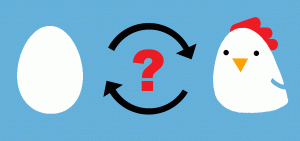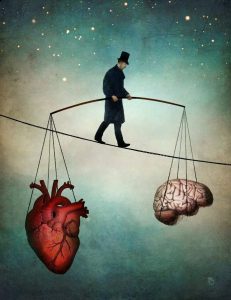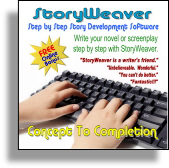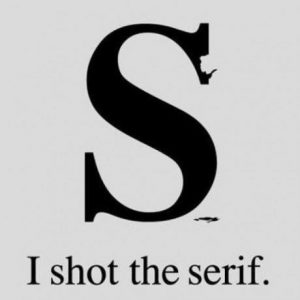 You sit in your favorite writing chair, by the window, on the porch, or in the study. You wear your favorite tweed jacket with the leather elbow patches, or your blue jeans, or your “creative shoes.” You look around at the carefully crafted environment you spent months arranging to trigger your inspiration. Reaching eagerly forward you place your hands on the keyboard or grasp the pen or pencil, and… Nothing happens.
You sit in your favorite writing chair, by the window, on the porch, or in the study. You wear your favorite tweed jacket with the leather elbow patches, or your blue jeans, or your “creative shoes.” You look around at the carefully crafted environment you spent months arranging to trigger your inspiration. Reaching eagerly forward you place your hands on the keyboard or grasp the pen or pencil, and… Nothing happens.
You look around the room again, out the window, sip your coffee, cross or uncross your legs, finger your lucky charm, reach forward and… Still nothing
What in blazes is wrong? You know you are full of inspiration; you can feel it! Why the ideas were flowing like a deluge just this morning, last night, or yesterday. Frustrated, yet determined, you try several more times to get the words to flow, but to no avail. “Good pen name, ” you think,” Noah Vale.”
So what’s the problem? How can you feel all primed to write, sit in your favorite environment with everything just perfect and still nothing comes?
Perhaps the problem is not where you are trying to write, but when!
Each of us has a creative time of day and a logistic time of day. Never heard of this? I didn’t discover it until quite recently myself. As a writer, I always thought creativity came and went with the Muse, sometimes bringing inspiration, sometimes spiriting it away. Like most writers, I had found that creating a quiet refuge, a creative sanctuary, increased the frequency and intensity of visits from the Muse. What I didn’t know was that the Muse keeps a schedule: she comes and goes like clockwork.
Here’s my scenario and see how it might apply to you… I’ve always felt guilty when I write – guilty that I’m not out cleaning something, building something, visiting someone, or even just getting out in the real world and living a little. But writing always draws me back. I find it therapeutic, cathartic, invigorating, stimulating, and, well, just plain fun. Sometimes… no, make that ALL the time, it’s as good as… no, make that BETTER THAN sex! And food! And earning a living! I often feel (when writing) like that rat with the wire connected to his pleasure center who kept pushing the stimulation button until it starved to death because it forgot to eat!
Well, the urge to write is there all the time. But, because I feel guilty I try to get all of my chores done I the morning, clearing the way to spend the afternoon or evening writing guilt free. But then I sit there watching the sun go down, full of the desire to write but completely unable to do so.
Recently, however, I had the good fortune of actually finishing all my chores the night before. I found myself with the whole morning free and guilt-free as well! At first, I was just going to goof off, do some reading, watch some TV, but then that old Writing Bug took a nip of my soul and off I was to my study to pound the keys. And you know what? The words just spilled out like secrets from the town gossip! This was wonderful! What an experience! I was pelting out the thoughts without the least guilt and without the slightest hesitation. I was flying through my own mind and playing it out on the keys! It felt very much like when I play music.
But why was this happening? I was truly afraid the feeling would go as quickly as it came and I would be lost in the creative doldrums again. In fact, it did fade with time – not abruptly, but gradually… slipping away until it was no more. But it did not leave a vacuum. In its place was a rising motivation to clean something, build something, visit someone, or get out in the real world and live!
Then, it hit me… Perhaps my creativity does not spring from where I write, but when! Perhaps the morning is my creative time and the afternoon, my practical time! I experimented. Try to write in the afternoon, the evening, at night, the morning. Quickly I discovered that if I felt free from the guilt of non-practical activity, I could write in the morning as if I were designed to do nothing else! But no matter how many chores I might accomplish in the morning, by the time the sun dropped below the horizon, my inspiration dropped away as well.
In fact, my creative time seems tied to the sun. For me, it brightens in the morning, peaks around noon, and fades away to nothing at dusk. Interestingly, I recently moved to the mountains and dusk comes early hear in the canyon this time of year – far earlier than when I lived down in the flatlands of the city.
Looking back over the years, I could see that my daily creative cycle depended upon the direct rays of the sun, not the time of day. And all those years I tried to get the practical stuff done in the morning to avoid guilt didn’t help my creativity but hindered it!
Lately, I just know that when the sun goes down it’s time to get practical. As a result, I know in the morning that I’ll accomplish real world logistic things later in the day. That eliminates guilt because the work part is already scheduled. And, that frees my mind to play with words all morning long.
When is your creative time? Just being a “morning person” or a “night person” isn’t enough because that only determines when you have your most energy. But what KIND of energy? Perhaps you are more energetic when you are working on the practical, so you think that just because you get your greatest energy at night you are a night person. This is not necessarily so! Suppose your creative side is NEVER the most energetic part of you, but is strongest in the morning. Then you are a Practical night person and a Creative morning person.
Your Creative Time might be any span of hours in the day. Or, it might even be more than one time. For example, you might be most inspired from mid-morning until noon and again from mid-afternoon to dusk. Everyone is a bit different. The key is to find your Creative Time and then adjust your daily schedule to fit it. It is important to remember to avoid guilt feelings while trying to determine your Creative Time. To do this, don’t just focus on when you are going to try writing, but make sure to also schedule other time to concentrate on chores. This way your “reading” of the level of your creativity will not be tainted by negative feelings of guilt, and you should arrive at more accurate appraisals.
After a week or so of trying different combinations, you should be able to determine the best creative and most practical times of the day. From that point forward, you will almost certainly find inspiration is present more than it is absent, and writing becomes far more joyful a process and less like work.
But there is a little bit more… Our lives are not just creative or practical. In fact, there are four principal emotionally driven aspects to our days: Creative, Practical, Reflective, and Social.
We need our Reflective time to be alone, to mull the events of our life over our minds eye, to let our thoughts wander where they will: to daydream. We need our Social time to recharge our batteries in the company of others, to express ourselves to our friends, to de-focus from our own subjective view by standing in the shoes of those around us.
I’ve found for myself that Saturday is a Social day for me, and that Sunday a Reflective day. I don’t do much of either on the weekdays at all. Whether this is nurture, nature, or something else altogether I can’t say, and to be truthful, it doesn’t really matter. What matters is that I have come to recognize it.
When is your Reflective time? Do you have some every day, just on weekdays, only on weekends, or some combination of these? How about your Social time? Do you ever feel guilty wanting to be alone? Do you ever feel deprived because you ARE alone? Part of these feelings may come from trying to do each of these activities in times that (for your) are actually geared toward the other.
Once you have mapped our your Creative, Practical, Reflective, and Social cycles, you’ll find that you get so much more accomplished, and with so much more fulfillment. All four aspects of your life will improve, and the improvement in each will remove emotional burdens and therefore increase the energy in each of the other three!
In short, you can be in phase with your emotional cycles, or out of phase. The more you schedule your activities to match the flow of your feelings, the more your life experience will buoy itself higher and higher with less and less effort. And best of all, the more inspiration you will find when you sit in your tweed jacket and reach for the keyboard.



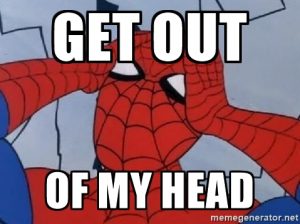 In this step, we’ll explore how to clear your mental decks to make room for all the story development to come.
In this step, we’ll explore how to clear your mental decks to make room for all the story development to come.
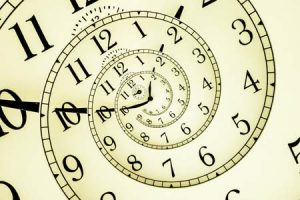 Storytelling Tip 8 of 50
Storytelling Tip 8 of 50
